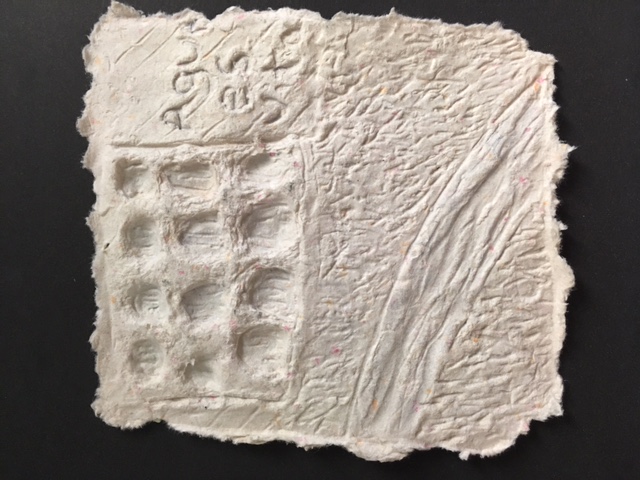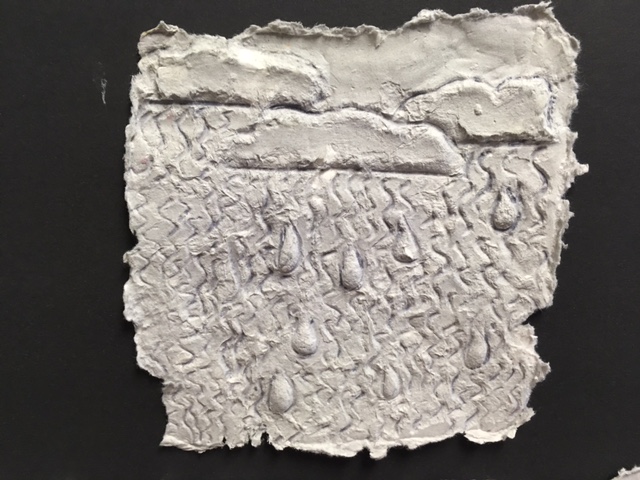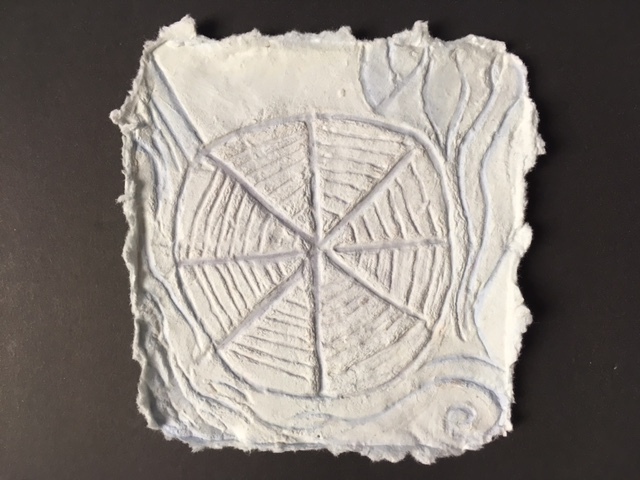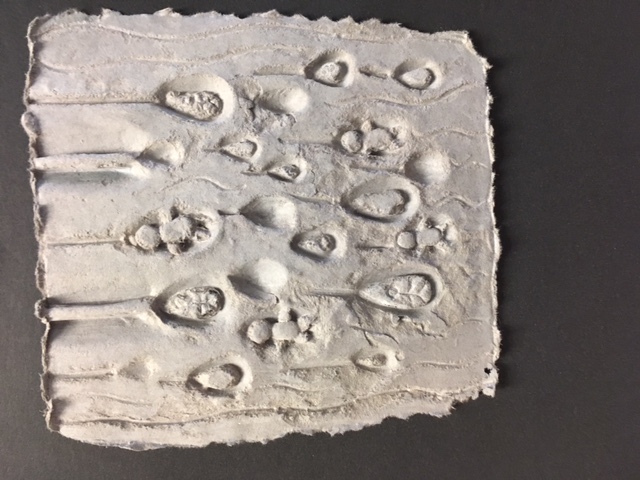Students Display Why It Is Critical To Protect Our Oceans
Background
YSI/Xylem Watermark volunteers partnered with the local Yellow Springs High School ninth grade class. They provided first-hand perspectives during this semester-long Project Based Learning curriculum focused on all things water. Volunteers first invited the students to YSI for a facility tour and half-day exploration of global and local water issues and how Xylem is working to solve these issues both from a technology perspective and a community engagement perspective.
Throughout the semester, Watermark volunteers continued to engage in the students learning with Career Day presentations and Little Miami River water quality and biodiversity studies. We were also excited to facilitate a pen-pal program between the YSHS students and students from a primary school in Kalewadi, India, as they were preparing for the installation of a new water tower from Watermark non-profit partner, Planet Water Foundation; through this exchange, the students learned first-hand from children their age about the impact of access to clean, safe water.
Inspired by the work of Watermark volunteers with global non-profit partners in communities in need around the world, the students dedicated their end-of-semester Project Water Exhibition to raising money for future Planet Water Foundation water projects. In their Exhibition titled “Water Is Life: A Creative Response to the Global Water Crisis”, students presented plays, poetry readings, and artwork, sharing their learnings about global water issues and calling the community to action to join them in building awareness and committing to enacting solutions. The community responded to the charge; raising over $1000 in donations to Planet Water Foundation. In thanks to the Xylem Watermark team, the students donated their Exhibition artwork for permanent display at YSI as a constant reminder that the solution to global water issues will, necessarily, be a creative one and one that involves every one of us.
Water Throughout History
Throughout history control of water resources has been critical to the survival and growth of civilizations. Advances in water control often led to a nation expanding its wealth and power. New water innovations, however, often led to long-term environmental problems or even social collapse (dams, irrigation, pollution, global warming, etc.)
Ancient Rome:
This group focused on the development of all civilizations around the world. This informs about the global water  crisis through the differences of how we use water to how they used water. They symbolized the ancient Roman culture with a newly built Colosseum, lush vegetation, finishing with a detailed model of the Tigris River with some zentangle design. This student also included the text “Water es Vita”, which means water is life in Latin which is the language they spoke. All of the group's projects feature a river. Rome was built on the Tigris for many reasons, but the biggest was for trade. One student decided to do Ancient Rome because it was a great time in Earth’s history with many distinguishing features. Romans made Rome great through its access to water, and through aqueducts, they managed to control where the water went. Thus, no longer having to move to where the water is. The one word Spanish description is río which means river.
crisis through the differences of how we use water to how they used water. They symbolized the ancient Roman culture with a newly built Colosseum, lush vegetation, finishing with a detailed model of the Tigris River with some zentangle design. This student also included the text “Water es Vita”, which means water is life in Latin which is the language they spoke. All of the group's projects feature a river. Rome was built on the Tigris for many reasons, but the biggest was for trade. One student decided to do Ancient Rome because it was a great time in Earth’s history with many distinguishing features. Romans made Rome great through its access to water, and through aqueducts, they managed to control where the water went. Thus, no longer having to move to where the water is. The one word Spanish description is río which means river.
Less than 1% of the World’s Water is Accessible and Safe for Drinking
Less than 1% of the world’s water is safe for drinking and accessible. While nearly 70 percent of the world is covered by water, only 2.5 percent of it is fresh. The rest is saline and ocean-based. Even then, just 1 percent of our freshwater is easily accessible and usable.
lluvia:
The group design was “1% of the world’s water is available for drinking” and each student created a representation of one source of water. One student created a composition of three clouds and many raindrops falling. She made this design to represent a source of our water; rainwater. A lot of the water available to drink comes from rainwater, though collecting rainwater has become illegal in some states. Her tile fits with the group project, since some of our water comes from rain, obviously filtered, and it is important in our world. In Spanish her word was lluvia, which means rain.
Water is Essential for All Parts of Human Life
Water is essential for all parts of human life, including food, crop production, energy, transportation, and recreation.Water is necessary for all life on earth. All living things need it to survive and in fact, humans are about 70% water.
Water for Energy:
This group’s design purpose is to represent the value, power, and what an important resource water is in the  world. Without water we would have nothing. The way this student's piece fits within this group’s art is that they all show the gifts water brings us, from fish, transportation, to electrical power.
world. Without water we would have nothing. The way this student's piece fits within this group’s art is that they all show the gifts water brings us, from fish, transportation, to electrical power.
A water wheel (rueda de agua) was created with water making it move. The water wheel is one of the oldest and most reliable pieces of engineering known to man. The first vertical water wheel was said to be invented by a Roman engineer named Vitruvius. This occurred somewhere between 31 B.C. and 14 A.D. The water wheel represents man and their power, but without the water the water wheel would stop, be useless, just like mankind.
Water is a Human Right!
The United Nations passed the Right to Water and Sanitation in 2010. It “ entitles everyone to sufficient, safe, acceptable, physically accessible and affordable water for personal and domestic uses" although this doesn’t happen for everyone. There are many factors that contribute to water scarcity, including population growth, agriculture, pollution/contamination, and climate change. Almost 700 million people (1 in 10) live without access to safe drinking water, including over ⅓ of Africa’s population.
Access To Clean Water:
This group's topic was “Water is a human right”. This student created a water droplet scene that has people in  the water droplets, this is showing how people are trapped in the area they are (represented by the water droplets), and either have access to drinking water that’s contaminated or don’t have access at all. The serious issue of droughts and water stressed areas is so extreme that it is the #1 problem according to the World Economic Forum. Almost 700 million people (1 in 10) live without access to safe drinking water, including over ⅓ of Africa’s population. Most have access to water but it is contaminated and carries diseases. 1.5 million children under five years old die each year as a result of water- and sanitation-related diseases...One child every 9 seconds. Water is essential to all forms of life. But 1 in 10 people are living without access to safe drinking water. He tried to create a work that would combine with everyone else’s while still making each one unique and connected. They tried to represent in different ways that water is a human right but people don’t have safe drinking water, and how water is an essential part to all living things. His Spanish word relating to water is lluvia - Rain.
the water droplets, this is showing how people are trapped in the area they are (represented by the water droplets), and either have access to drinking water that’s contaminated or don’t have access at all. The serious issue of droughts and water stressed areas is so extreme that it is the #1 problem according to the World Economic Forum. Almost 700 million people (1 in 10) live without access to safe drinking water, including over ⅓ of Africa’s population. Most have access to water but it is contaminated and carries diseases. 1.5 million children under five years old die each year as a result of water- and sanitation-related diseases...One child every 9 seconds. Water is essential to all forms of life. But 1 in 10 people are living without access to safe drinking water. He tried to create a work that would combine with everyone else’s while still making each one unique and connected. They tried to represent in different ways that water is a human right but people don’t have safe drinking water, and how water is an essential part to all living things. His Spanish word relating to water is lluvia - Rain.
Ocean Protection is Critical
Oceans are the lifeblood of planet Earth and humankind. They flow over nearly three-quarters of our planet, and hold 97% of the planet is water. They produce more than half of the oxygen in the atmosphere, and absorb the most carbon from it.
Sea Turtle:
This student created a composition of a sea turtle swimming in the ocean. The sea turtle has been around since  the time of the dinosaurs. Almost all of the sea turtle species have been deemed endangered, due to poaching, habitat destruction, and over-exploitation. The sea turtle is just one of many sea creatures. These species depend on one another and work with each other to survive. Our oceans get polluted by trash, toxins, and plastic each day, and over one hundred thousand sea mammals are killed due to this every year. It is important to protect our oceans because we depend on them more than you may think. They produce more than half of the oxygen in the atmosphere. Ocean-based businesses contribute over $500 billion to the economy. Those living by the shore depend on the ocean for survival. My tile fits in with my group’s theme of showing different sea animals and shells and the harmony of a stable and safe ecosystem.
the time of the dinosaurs. Almost all of the sea turtle species have been deemed endangered, due to poaching, habitat destruction, and over-exploitation. The sea turtle is just one of many sea creatures. These species depend on one another and work with each other to survive. Our oceans get polluted by trash, toxins, and plastic each day, and over one hundred thousand sea mammals are killed due to this every year. It is important to protect our oceans because we depend on them more than you may think. They produce more than half of the oxygen in the atmosphere. Ocean-based businesses contribute over $500 billion to the economy. Those living by the shore depend on the ocean for survival. My tile fits in with my group’s theme of showing different sea animals and shells and the harmony of a stable and safe ecosystem.
We Use More Water Than Ever
Over the past 40 years the world’s population has doubled and use of water has quadrupled. While it takes about 12 gallons per day to sustain a human, the average American uses about 158 gallons.
Hourglass:
This student symbolized how freshwater is going down at a very fast rate. His piece is an hour glass that has a drop of water in it. He tried very hard to make his piece like very dry satire because we really are running out of the water. The group topic represents how the world is running out of the water. Fact: “drought” is an extended period of deficient rainfall relative to the statistical multi-year average for a region. But because of the various ways it is measured, an objective drought definition has yet to be produced upon which everyone can agree.
If you are inspired, you can make a donation in honor of the YSHS students to Planet Water Foundation.
>>> Make Your Donation
Additional Blog Posts of Interest
Who's Minding the Planet?
Life After Deepwater Horizon | Remediation Efforts on the Gulf of Mexico
Waterkeepers at the Third Pole | Protecting the Himalayas
Water Monitoring Instrumentation Continues to Evolve into 2017